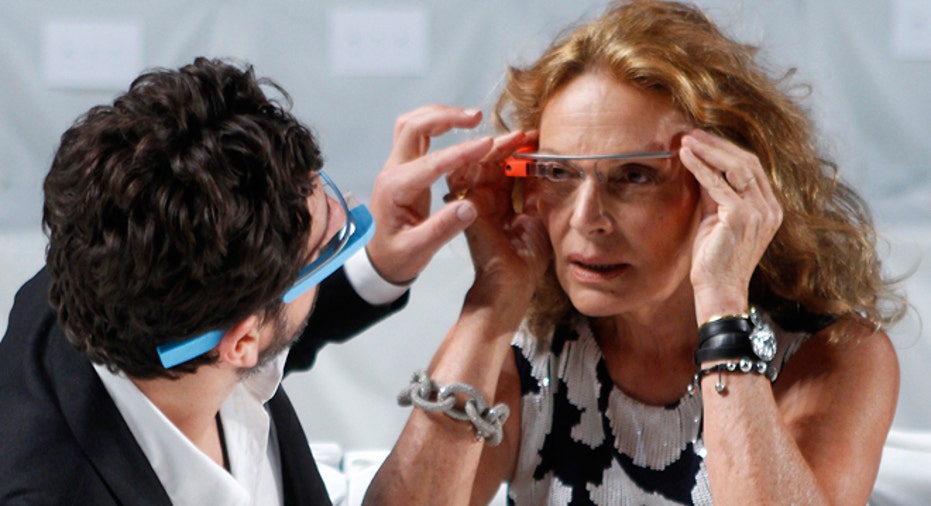Google Quietly Distributes New Version of Glass

Google Inc. is quietly distributing a new version of its Glass wearable computer aimed at businesses in industries such as healthcare, manufacturing and energy, according to people familiar with the situation.
The new Glass is a curved rectangle, similar to the first Explorer version, but does not include a wire-like frame. Instead, it has a button-and-hinge system to attach the mini-computer to different glasses, the people said.
Google is pitching the new version exclusively to businesses. A new consumer version is at least a year away, the people familiar with the matter said.
Google doesn't plan to officially launch the new version, the people said, a far cry from the skydivers who brought the first version to a Google conference in 2012. Instead, Google is distributing the new model to software developers creating programs to use the device in business settings. The goal is to have businesses using the device by fall, the people said.
Google didn't respond to requests for comment.
The initial version of Glass, which sold for $1,500, prompted a widespread privacy backlash because users could record video in public places without others noticing. Google stopped selling it in January and executives have admitted that the device was released before it was ready for consumers.
As recently as late 2014, Google planned a revamped consumer version, according to the people familiar with the matter. They said Google had bought or leased real estate in several cities for stores that would sell the device.
Around December, this plan was scrapped, the people added, and the Glass team was moved out of the Google X research lab and into the Nest connected-home division, led by former Apple Inc. executive Tony Fadell.
The shift reflected a tension inside Google between engineers familiar with software and those with a hardware background. Google is famous for releasing early versions of software products and tweaking them with improvements, based partly on feedback from users. But Mr. Fadell, a hardware veteran, prefers to keep products under wraps until they are ready for consumer use. He has said that it takes longer to develop hardware than software. A spokeswoman for Mr. Fadell referred questions to Google.
The people familiar with the matter said Google remains committed to the technology and ultimately releasing a new consumer version.
Google hopes to skirt privacy issues with the current model, because it will be used mostly in private workplaces. Surgeons used the initial version during procedures, either to get advice from colleagues remotely or to instruct medical students. Field workers tested it while fixing expensive machinery with help from co-workers back at headquarters.
The new model has a faster Intel processor, improved battery life of as long as two hours and improved wireless connectivity, the people said. The cube-like glass prism used to project the display into users' field of vision is longer and thinner in the new version. This can be moved vertically as well as horizontally, while the first version offered only horizontal adjustment, one of those people said.
Version two also comes with a battery pack that Google developed specifically to connect magnetically to the gadget, the people added. With the first version, which suffered from short battery life, users often hooked the device up to battery packs developed by other companies using mini USB connectors.
Tech blog 9to5Google earlier reported some details of the new Glass version.
(By Alistair Barr)